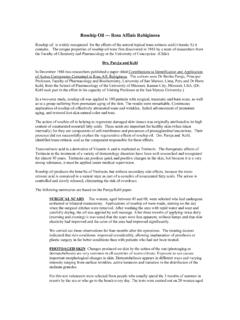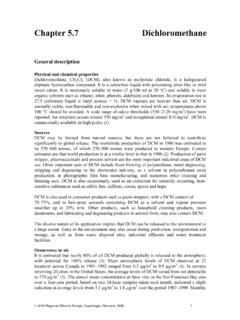Transcription of Notice 2016-16 Mid-Year Changes to Safe Harbor Plans and ...
1 Notice 2016 -16 Mid-Year Changes to Safe Harbor Plans and Safe Harbor Notices I. PURPOSE This Notice provides guidance on Mid-Year Changes to a safe Harbor plan under 401(k) and 401(m) of the Internal Revenue Code. The Notice provides that a Mid-Year change either to a safe Harbor plan or to a plan s safe Harbor Notice does not violate the safe Harbor rules merely because it is a Mid-Year change, provided that applicable Notice and election opportunity conditions are satisfied and the Mid-Year change is not a prohibited Mid-Year change, as described in the Notice . In addition, the Notice requests comments on additional guidance that may be needed, in particular with respect to Mid-Year Changes to safe Harbor Plans in cases in which a plan sponsor is involved in a merger or acquisition. II. BACKGROUND A. Exemptions from ADP and ACP Testing for Safe Harbor Plans Under general nondiscrimination rules, benefits under or contributions to a qualified plan must be nondiscriminatory in amount.
2 Section 401(k) Plans satisfy this requirement if elective contributions made on behalf of highly compensated employees ( HCEs ) for a year satisfy the actual deferral percentage ("ADP") test. A similar actual contribution percentage ( ACP ) test applies to matching contributions and employee contributions pursuant to 401(m). As an alternative to satisfying the annual ADP and ACP test, a plan may be structured to use a safe Harbor plan design. For purposes of this Notice , a safe Harbor plan is a plan that includes a cash or deferred arrangement described in 401(k)(12) (traditional 401(k) safe Harbor ) or 401(k)(13) (qualified automatic contribution arrangement ( QACA ) 401(k) safe Harbor ), or a matching contribution described in 401(m)(11) (traditional matching safe Harbor ) or 401(m)(12) (QACA matching safe Harbor ).
3 For purposes of this Notice , (k)-3 and (m)-3 are referred to as the safe Harbor plan regulations. The safe Harbor plan regulations set out requirements for a 401(k) or 401(m) plan to be a safe Harbor plan, including requirements regarding contributions, requirements that certain plan provisions remain in effect for a 12-month plan year (subject to certain exceptions), and requirements regarding the provision of safe Harbor notices. 2 B. Safe Harbor Plan Provisions That Must Remain in Effect for Entire 12-Month Plan Year Section (k)-3(e)(1) provides that a plan will fail to satisfy the requirements of 401(k)(12) and 401(k)(13) and (k)-3 unless plan provisions that satisfy the safe Harbor plan rules of (k)-3 are adopted before the first day of the plan year and remain in effect for an entire 12-month plan year.
4 It also provides that a safe Harbor plan that includes provisions that satisfy the safe Harbor plan rules of (k)-3 will not satisfy the nondiscrimination requirements for 401(k) Plans for a plan year if the safe Harbor plan is amended to change those provisions during the plan year. Section (m)-3(f) includes similar provisions for matching safe Harbor Plans . The safe Harbor plan regulations set out several exceptions to the requirement that plan provisions satisfying the rules of (k)-3 and (m)-3 be adopted before the first day of the plan year and continue for an entire 12-month plan year. These include exceptions for (i) a short first plan year, (ii) a change in the plan year, (iii) a short final plan year, (iv) a delayed adoption of safe Harbor plan nonelective contributions (if Notice of this possibility is provided before the beginning of the plan year), and (v) a Mid-Year reduction or suspension of safe Harbor contributions (which results in loss of safe Harbor plan status).
5 See (k)-3(e), (f), and (g) and (m)-3(f), (g), and (h).1 In addition, exceptions to the prohibition against Mid-Year amendments may be provided in guidance of general applicability published in the Internal Revenue Bulletin. See (k)-3(e) and (m)-3(f). C. Safe Harbor Notice Requirements The Notice requirements applicable to traditional 401(k) safe Harbor Plans are satisfied if each employee eligible to participate is given, within a reasonable period before any year, written Notice of the employee's rights and obligations under the arrangement and the Notice meets certain content and timing requirements. See 401(k)(12)(D) and (k)-3(d). Sections 401(k)(13)(E) and 401(m)(11)(A)(ii) impose similar Notice requirements with respect to QACA and matching safe Harbor Plans . This Notice refers to notices provided under these sections as safe Harbor notices.
6 To meet the content requirements, a safe Harbor Notice must be sufficiently accurate and comprehensive to inform an employee of the employee's rights and obligations under the plan, and written in a manner calculated to be understood by the average employee eligible to participate in the plan. Under the safe Harbor plan regulations, a Notice is not considered sufficiently accurate and comprehensive unless 1 Other guidance discussing Mid-Year Changes to safe Harbor Plans includes: Ann. 2007-59, 2007-25 1448 (certain hardship withdrawal Changes and designated Roth contribution Changes ); Notices 2010-84, 2010-51 872, and 2013-74, 2013-52 819 (certain designated Roth contribution Changes ); and Notice 2014-37, 2014-24 1100 (certain Changes related to same sex spouses).
7 3 the Notice accurately describes certain information specified in those regulations, including the plan s safe Harbor contributions, any other plan contributions, the type and amount of compensation that may be deferred under the plan, how to make cash or deferred elections (including any administrative requirements that apply to the elections), the plan s withdrawal and vesting provisions, and specified contact information. See (k)-3(d) and (m)-3(e). In addition to satisfying the general content requirements for a safe Harbor Notice , a safe Harbor Notice for a QACA must describe certain additional items, including the level of elective contributions that will be made on the employee's behalf if the employee does not make an affirmative election and how contributions will be invested. See (k)-3(k). Requirements for providing safe Harbor notices on a timely basis are set out in (k)-3(d).
8 A safe Harbor Notice generally must be provided within a reasonable period before the beginning of the plan year. Whether this timing requirement is met is based on all of the relevant facts and circumstances, but the timing requirement is deemed to be satisfied if a safe Harbor Notice is provided at least 30 days (and not more than 90 days) before the beginning of the plan year. Special timing rules apply for employees who become eligible during the plan year. These requirements for delivery of safe Harbor notices also apply under (m)-3(e). Section (k)-3(k) provides additional Notice timing rules for QACAs. D. Election Period after Receipt of Notice The safe Harbor plan regulations provide that a safe Harbor plan generally may limit the frequency and duration of periods in which eligible employees may make or change cash or deferred elections under the plan, but require that an employee have a reasonable opportunity (including a reasonable period after receipt of a safe Harbor Notice ) to make or change an election.
9 For this purpose, a 30-day election period is deemed to be a reasonable period to make or change a cash or deferred election. See (k)-3(c) and (m)-3(c). III. GUIDANCE ON Mid-Year Changes TO SAFE Harbor Plans AND NOTICES A. Overview Section of this Notice provides guidance on Mid-Year Changes to a safe Harbor plan or to a plan s required safe Harbor Notice content that do not violate the safe Harbor plan rules in (k)-3 and (m)-3. For purposes of this Notice , a Mid-Year change is (i) a change that is first effective during a plan year, but not effective as of the beginning of the plan year, or (ii) a change that is effective as of the beginning of the plan year, but adopted after the beginning of the plan year. Also, for purposes of this Notice , required safe Harbor Notice content refers to the information that is required by the safe Harbor plan regulations to be provided in a plan s safe Harbor Notice .
10 Section of this Notice sets out special conditions that must be satisfied for a 4 Mid-Year change that alters the plan s required safe Harbor Notice content. Not every Mid-Year change to a safe Harbor plan alters information required to be provided in a plan s safe Harbor Notice (for example, information about a plan s entry date is not required to be provided in a plan s safe Harbor Notice ). Similarly, information required to be included in a plan s safe Harbor Notice can change Mid-Year even if no change is made to the safe Harbor plan (for example, a change in contact information). Section of this Notice lists prohibited Mid-Year Changes , and section of this Notice provides examples illustrating certain aspects of the guidance provided under this Notice . B. Mid-Year Changes to Safe Harbor Plans and Notices A change made to a safe Harbor plan or to a plan s required safe Harbor Notice content does not violate the requirements of (k)-3 and (m)-3 merely because the change is a Mid-Year change, provided that (i) if it is a Mid-Year change to a plan s required safe Harbor Notice content, the Notice and election opportunity conditions in section of this Notice are satisfied, and (ii) the Mid-Year change is not described in the list of prohibited Mid-Year Changes in section of this Notice .











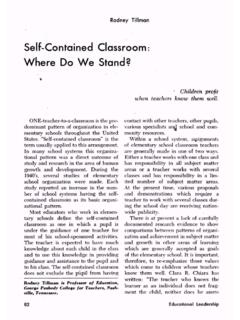
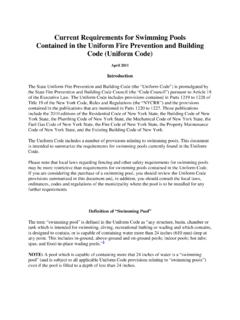
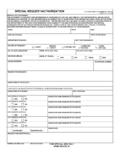
![Form GST ITC -03 [See rule 44(4)] Declaration for ...](/cache/preview/c/d/1/5/2/f/5/4/thumb-cd152f54d11bed204d4d28a8f1b1e72c.jpg)
